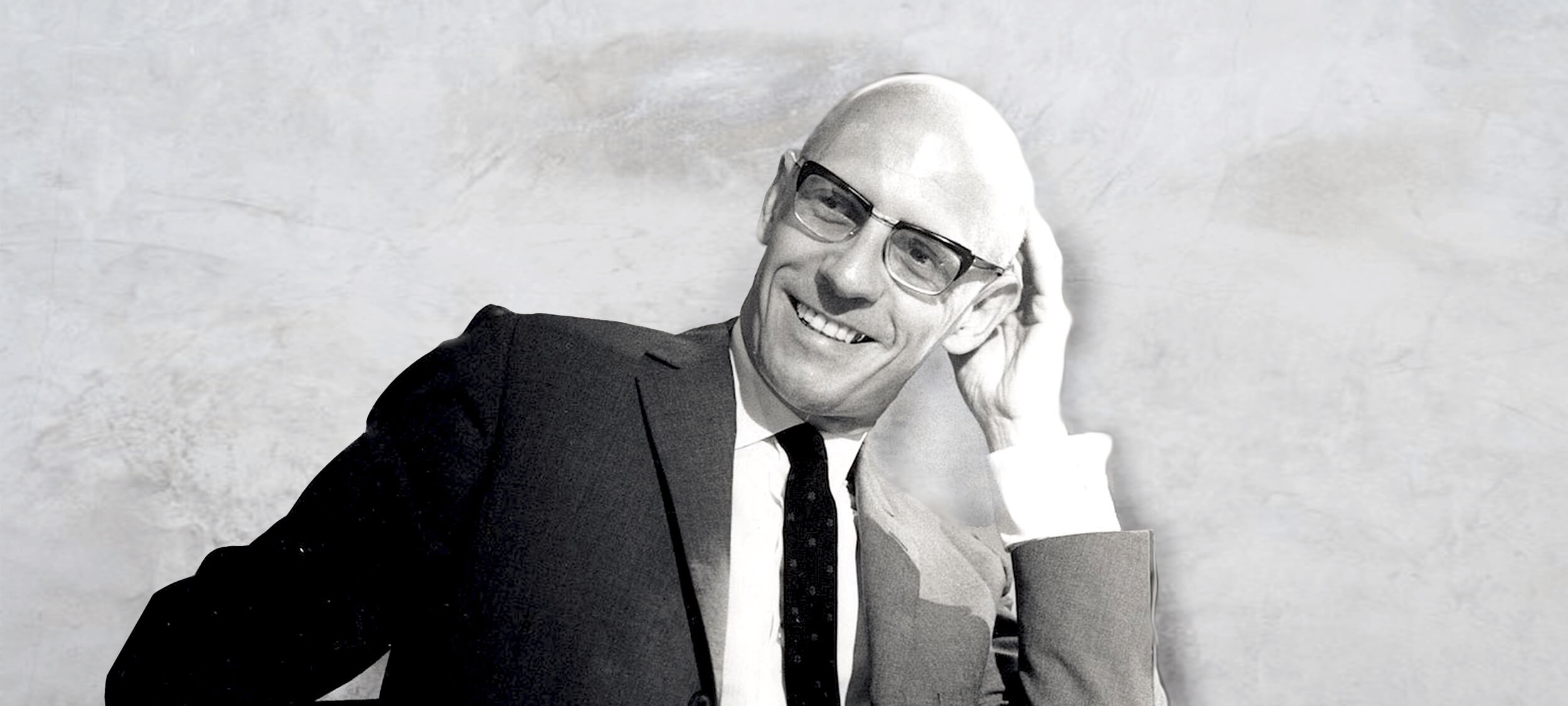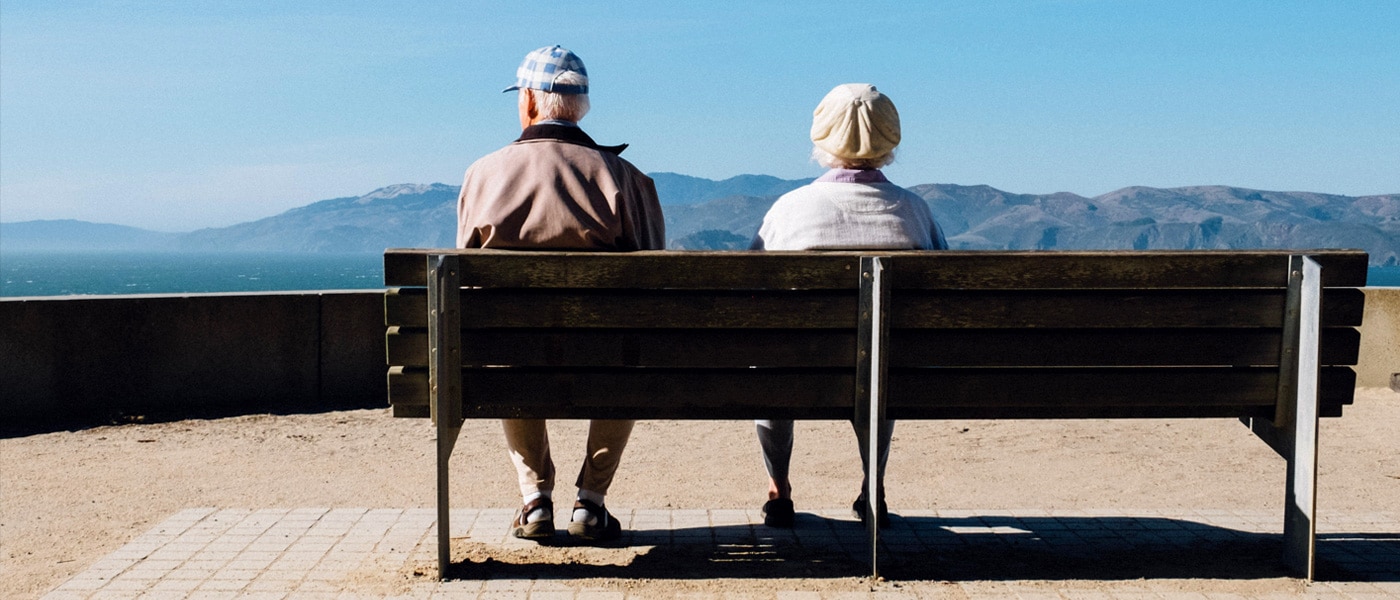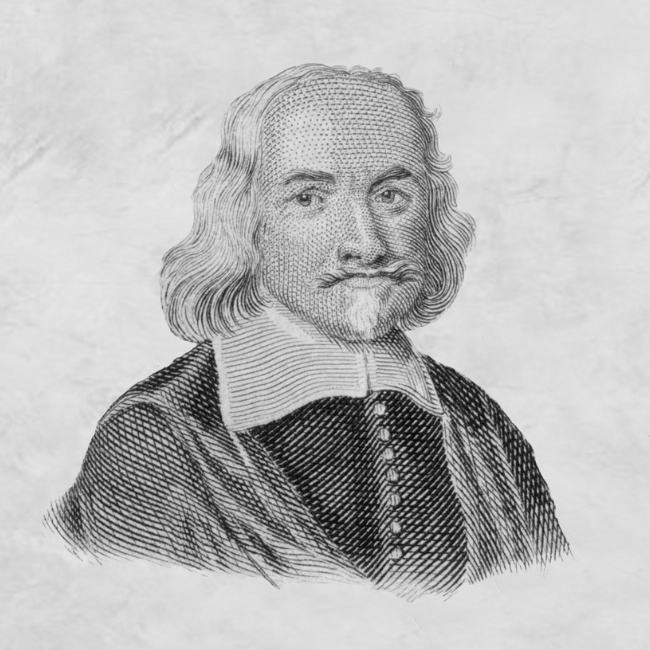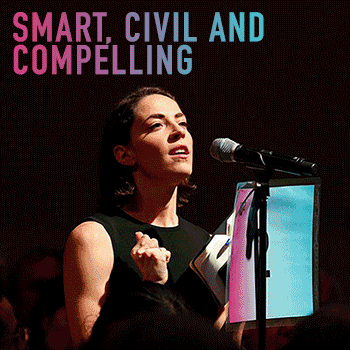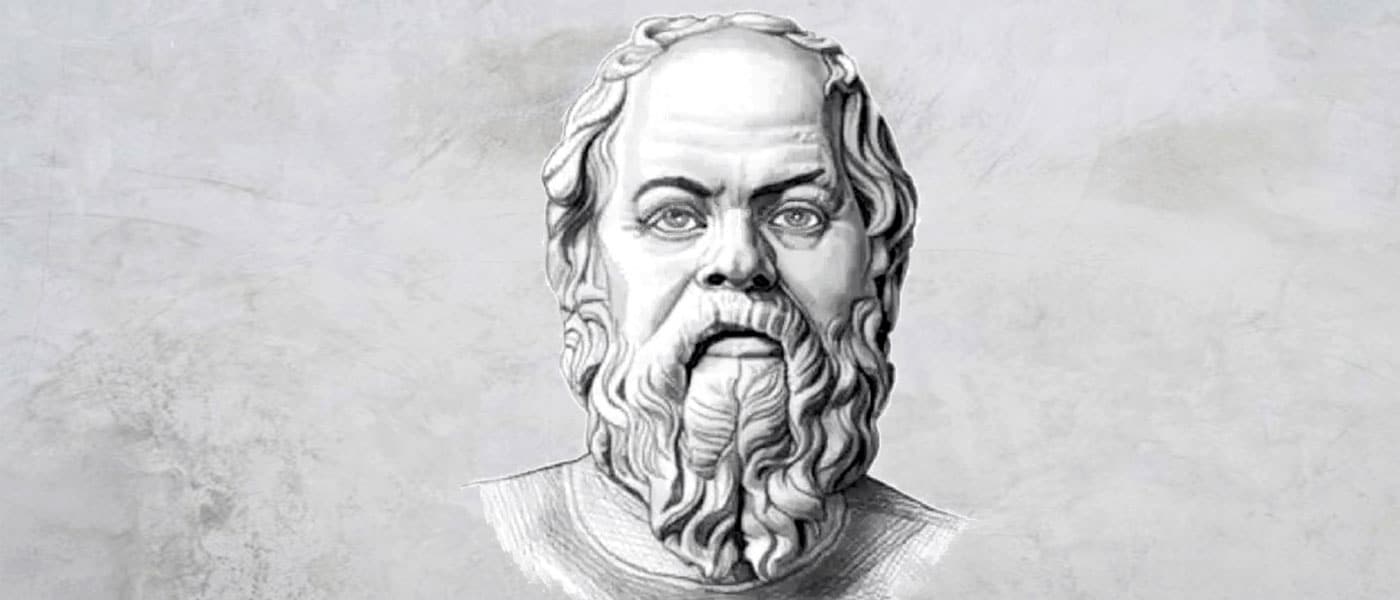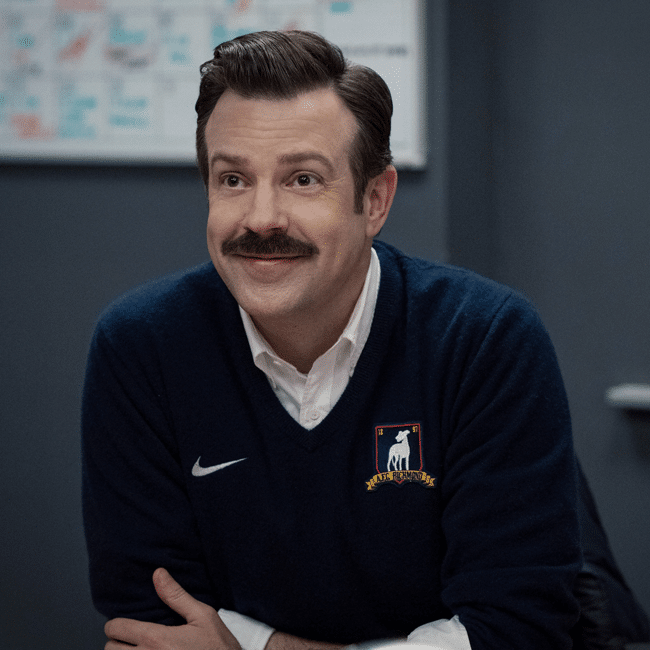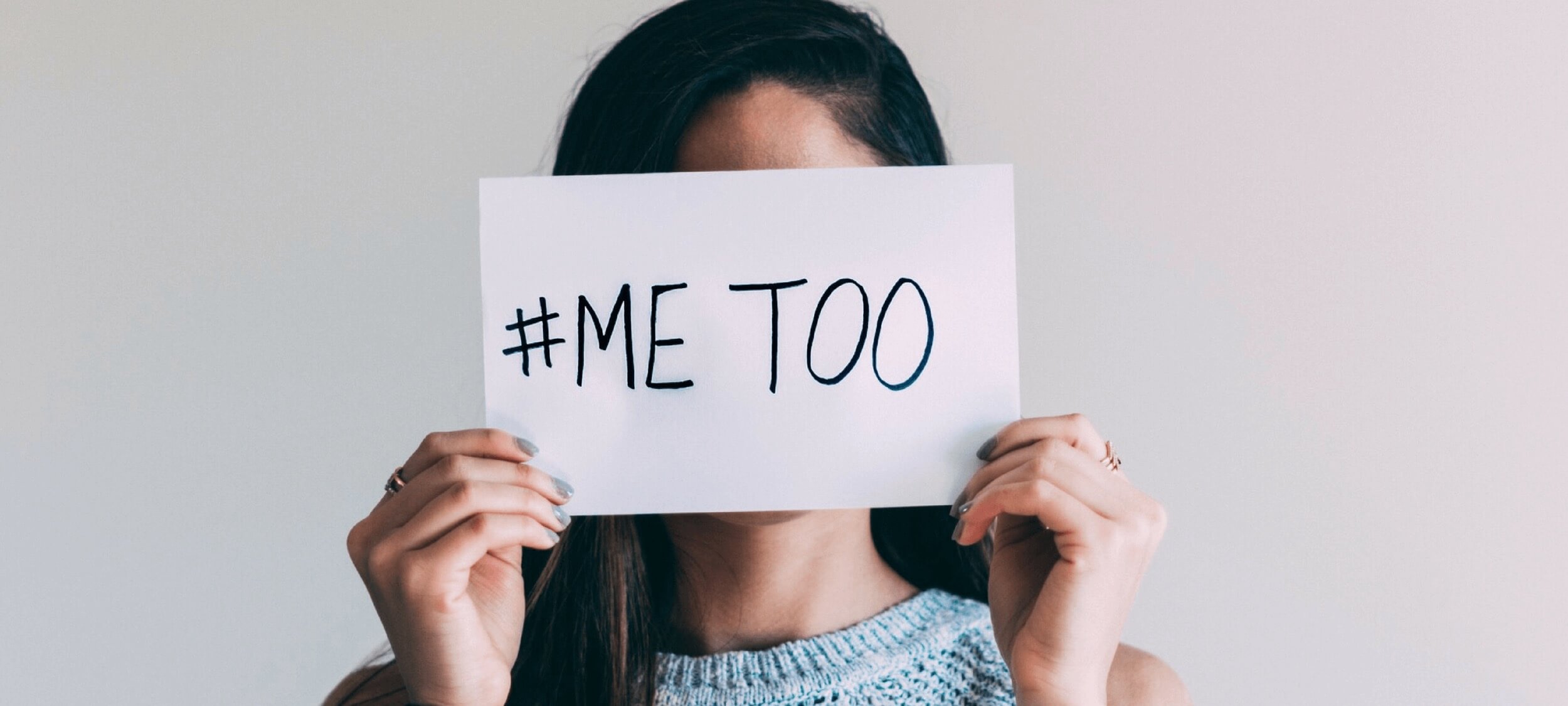Unconscious bias: we’re blind to our own prejudice

Unconscious bias: we’re blind to our own prejudice
Opinion + AnalysisBusiness + LeadershipRelationships
BY Jack Hume The Ethics Centre 28 SEP 2016
For the most part, we respect our colleagues and probably wouldn’t ever label them ‘sexist’ and certainly not ‘racist’. But gender and ethnic diversity in workplaces shows something is amiss.
Women fare worse than men across most measures of workforce equity. The Australian Government’s Gender Equality Agency report notes women who work full-time earn 16 percent less per week than men, constitute 14 percent of chair positions, 24 percent of directorships and 15 percent of CEO positions.
Women lose at both ends of the career lifecycle. Their average graduate salaries are 9 percent less than their male equivalents’ and their average superannuation balances 53 percent less.
Sociology, psychology and gender and cultural studies have all weighed in on the multiple causes of these inequalities, with much of the conversation converging around the role of ‘unconscious bias’ in decision-making.
Applicants with Indigenous, Chinese, Italian and Middle Eastern sounding names were seen to be systematically less likely to get callbacks than those with Anglo-Saxon names.
Studies in which people are asked to evaluate the capabilities and aptitudes of a job candidate show effects of implicit biases on job assessment. In a study mimicking hiring procedures for math related jobs, male candidates fared so much better than women that lower-performing males were chosen over better female candidates.
Similar effects have been seen with regard to race. In Australia, applicants with Indigenous, Chinese, Italian and Middle Eastern sounding names were less likely to get callbacks than those with Anglo-Saxon sounding names.
When biases become socially reinforced, individuals can come to see them as ‘reality’. Studies have shown women tend to believe they are worse at math than men and this belief has a negative impact on their performance.
In one study, a group of women were asked their gender prior to math tests and performed worse than the group who weren’t asked to disclose it. This phenomenon is called the ‘stereotype threat’ and it extends to racial beliefs. Two decades ago, a landmark study found that asking students of colour to identify their ethnicity prior to a test resulted in a substantially poorer grade.
This evidence suggests human resource departments might consider adopting hiring procedures that don’t require race, gender or even an applicant’s name be stated. Of course, at some point, the candidate will need a face-to-face interview, so this isn’t a perfect solution to bias- but it does reduce its influence.
Volunteering to learn more about diversity signifies a more general willingness to open organisational culture to people from different backgrounds.
Alongside systematic and procedural changes, we can help cultivate organisational willingness to combat inequality through diversity training. These training programs rose to prominence around a decade ago as a result of a wave of lawsuits against major US companies. However, as Frank Dobbin and Alexandra Kalev explained in an article for the Harvard Business Review, they were dazzlingly unsuccessful — resulting in negative outcomes for Asians and Black women, whose representation dropped an average of five and nine percent, respectively.
Dobbin and Kalev suggest the major reason these programs failed is probably because they were usually mandatory. This suggests they were motivated more by risk aversion — ‘discriminate and you’ll be fired’ — than a genuinely held belief diversity is valuable. It’s not surprising systematic change didn’t occur under such conditions.
At the same time, companies who used voluntary diversity programs saw increases in black, Asian and Hispanic representation – even as the average was decreasing nationwide. Volunteering is most likely motivated by a belief that diversity is genuinely valuable — factors that seem far more effective in influencing workplace diversity, perhaps because they are genuine.
Science is yet to tell us whether we can actually reduce biases let alone erase them altogether. All the same, we can begin to mend workplace inequalities by actively engaging peoples’ will to change.
Ethics in your inbox.
Get the latest inspiration, intelligence, events & more.
By signing up you agree to our privacy policy
You might be interested in…
Opinion + Analysis
Health + Wellbeing, Relationships, Science + Technology
Philosophically thinking through COVID-19
Explainer
Relationships
Ethics Explainer: Begging the question
Big thinker
Relationships, Society + Culture
Big Thinker: Simone de Beauvoir
Opinion + Analysis
Relationships
Do we have to choose between being a good parent and good at our job?
BY Jack Hume
Jack studied Philosophy and Psychology at the University of Sydney, completing his Bachelor of Arts in 2017 with First Class Honours. He has supported The Ethics Centre's Advice & Education team in research capacities over the last two years, contributing to their work on cognitive bias in decision making, and ethics education in financial services. In 2018, he joined the Centre full-time as a Graduate Consultant. He brings insights from contemporary political philosophy, moral psychology and skills in qualitative research to consulting projects across a variety of sectors.
BY The Ethics Centre
The Ethics Centre is a not-for-profit organisation developing innovative programs, services and experiences, designed to bring ethics to the centre of professional and personal life.
Want men to stop hitting women? Stop talking about “real men”
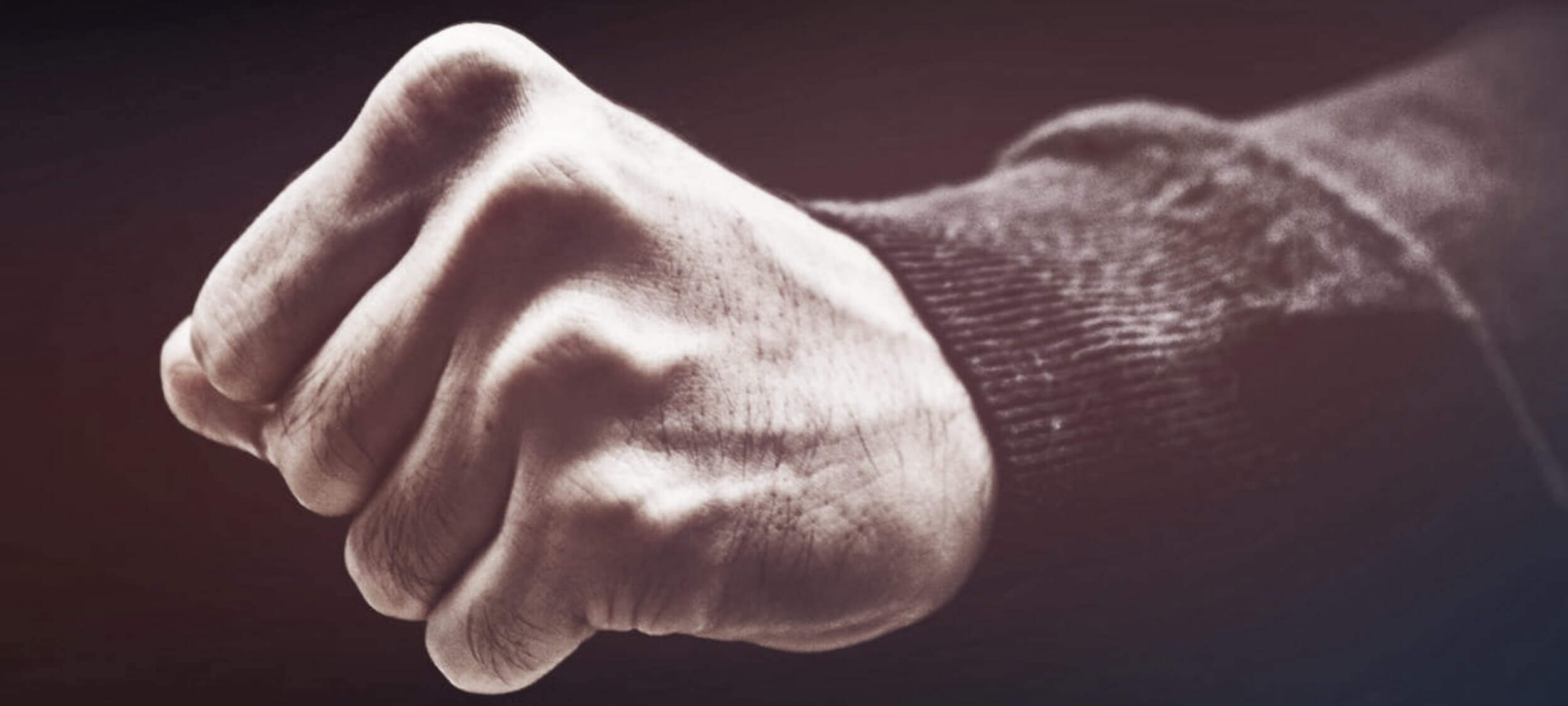
Want men to stop hitting women? Stop talking about “real men”
Opinion + AnalysisRelationships
BY Michael Salter The Ethics Centre 28 SEP 2016
“Real men don’t hit women,” declared Prime Minister Malcolm Turnbull in 2015, before announcing a significant domestic violence funding package.
This slogan was also routinely utilised by former Prime Minister Tony Abbott and is a long-standing feature of prevention and education campaigns around the world.
The message is one many people support. On the face of it, it serves the dual purpose of shaming domestic violence perpetrators and reinforcing the masculinity of non-violent men.
It’s interesting this message is most often delivered by stereotypically successful men such as politicians, sports stars and celebrities. In this way, men and boys are encouraged to see refraining from bashing women as another masculine accomplishment that deserves recognition and acclaim.
We are assured we can be “real men” and enjoy all the perks of masculinity without needing to resort to violence against women. Apparently, not hitting women makes our masculinity even more ‘real’.
On closer inspection, it seems peculiar to celebrate men and boys for not engaging in obviously illegal and harmful behaviour. What is it about violence against women that prompts us to proclaim the masculinity of men who eschew it?
Sexism is so pervasive in our society it becomes invisible, like the air we breathe. It produces the conditions in which domestic violence takes place and then seeps into the solutions we propose for domestic violence. It would be inappropriate to tell white supremacists they can still be ‘racially pure’ without racial violence. “Real whites don’t hit blacks” might ostensibly be an anti-violence message but it hinges on the very notion of racial purity causing the violence.
In the same way, “real men don’t hit women” only makes sense within the culture of sexism that drives violence against women. Male anxiety about being a “real man” is at the very core of physical and sexual violence.
Men who identify strongly with traditional, stereotypical notions of masculinity are most at risk of perpetrating domestic violence. Boys raised in a culture of masculine entitlement can grow into men who feel disrespected and turn to violence when they don’t receive the status and deference they expect from their partner.
Messages about “real men” are not part of the solution to domestic violence. They are part of the problem. Every Australian man grows up being told “real men don’t hit women”. We are taught “real men” are naturally strong and aggressive, but women are too weak and defenceless to make legitimate targets.
Instead, we are encouraged to direct our violence against each other, usually through sport (or physical combat after a few beers). Manfully protecting women is another way of proving our masculinity to others.
“Real men don’t hit women” suggests violence against women is wrong because it is cowardly. It supports the stereotypical view of women as too weak to defend themselves. In fact, women regularly strike back against domestic violence. As a domestic violence worker said during a research interview recently, “Not all of our DV victims are the meek, quiet woman who doesn’t speak up for herself, you know”.
Women who exercise their right to defend themselves against male violence are often stigmatised. They defy sexist expectations that “real women” are too weak to protect themselves and need a “real man” to rescue them.
We won’t stop violence against women by promoting gender stereotypes. The man least likely to hit or abuse a woman is someone who doesn’t care if he’s a “real man” or not. He’s found fulfilling relationships that don’t depend on other people’s assessments of his masculinity.
The good news is these are exactly the relationships men are looking for. No boy grows up hoping to turn into a violent partner or abusive father. Boys and men want to be part of strong relationships, healthy families and happy communities.
Violence corrodes relationships and leaves men alienated, confused and dependent on empty macho displays for a momentary sense of self-esteem. That’s the cost of worrying constantly about being a “real man”. Leaving that anxiety behind opens up a raft of opportunities for boys and men to engage with the people we care about on the basis of mutual respect.
Male violence is an obstacle to the kinds of lives men want to lead. This is the message we should be taking to men and boys.
If you or someone you know is affected by sexual assault or domestic violence, call 1800RESPECT on 1800 737 732. In an emergency, call 000.
Ethics in your inbox.
Get the latest inspiration, intelligence, events & more.
By signing up you agree to our privacy policy
You might be interested in…
Opinion + Analysis
Relationships
Violent porn and feminism
Opinion + Analysis
Relationships, Society + Culture
Big Thinker: Kwame Anthony Appiah
Opinion + Analysis
Business + Leadership, Relationships
How the Canva crew learned to love feedback
Opinion + Analysis
Relationships, Science + Technology
To see no longer means to believe: The harms and benefits of deepfake
BY Michael Salter
Scientia Fellow and Associate Professor of Criminology UNSW. Board of Directors ISSTD. Specialises in complex trauma & organisedabuse.com
BY The Ethics Centre
The Ethics Centre is a not-for-profit organisation developing innovative programs, services and experiences, designed to bring ethics to the centre of professional and personal life.
I’m an expert on PTSD and war trauma but I won’t do the 22 push up challenge

I’m an expert on PTSD and war trauma but I won’t do the 22 push up challenge
Opinion + AnalysisHealth + Wellbeing
BY Nikki Coleman The Ethics Centre 27 SEP 2016
I’ve taught thousands of brave men and women at the Australian Defence Force Academy for the past six years. I’ve cooked for many of them in my home and shared a river of tea and coffee with others.
Many have been broken by their experiences in the military – for some I have literally taken the rope from around their neck, the pill bottle from their hands and talked them off the edge of a cliff. They are the walking wounded the Prime Minister is seeking to help.
Given all this, it was no surprise a friend invited me to complete the ‘22 push-up challenge’, a campaign to raise money and awareness for PTSD. 22 push ups for 22 days to represent the 22 veterans killed by suicide according to the US Department of Veterans Affairs.
But I’m not going to take part in the 22 push up challenge.
I’m a philosopher currently completing a PhD on the subjects of veteran PTSD and moral injury, so I understand the importance of awareness and support for soldiers currently serving, as well as veterans after they leave the ADF. Awareness raising is crucial for veterans because the feelings of isolation and disconnection from the civilian community can exacerbate the severity of mental health issues proceeding from trauma.
It also reflects on us as a community how well we are willing to care for those who have put their lives on the line to protect our country or innocent people overseas. Our wounded vets deserve the very best treatment, the very best care. They and their families risk everything for our safety. It goes without saying they deserve treatment to help them to heal. But although the treatment for Australian veterans with mental health issues like PTSD could be better, it is much better than for anyone else with PTSD.
Veterans are overrepresented in media coverage and funding allocations to do with trauma and mental health.
Last year a non-veteran family member suffered from PTSD. They were on suicide watch, requiring me to work from home and balance professional commitments, my academic research and the crucial task of preventing a loved one from dying. During this time hospital services were unavailable – in practice, it feels like there is simply nowhere for non-veterans to go.
If they were a veteran, it would have been different. There are specialised treatment facilities available for them, which I know because we were turned away from each of them.
I take no issue with the fact treatment is available for veterans. As I’ve said, they deserve more than what is presently available to them. However, the media attention provided to veterans is vastly disproportionate to the actual experience of trauma-related mental illness in Australia.
Most cases of PTSD are those recovering from rape and sexual abuse and the majority of sufferers are women. The majority of patients are men, in part because it could re-traumatise female survivors of sexual abuse to be in therapy with men and in part because the professions who tend to receive trauma support are male dominated. Most of our treatment facilities are also allocated for veterans with PTSD, largely because places in these treatment programs are funded by the DVA and veteran-based charities. In short, veterans are overrepresented in media coverage and funding allocations to do with trauma and mental health.
It’s not obvious why a certain group should enjoy special privileges in the civilian healthcare system.
The government recently announced a new suicide prevention initiative for ADF personnel and while it’s true there is also a broader focus on suicide prevention, women’s shelters and rape crisis centres continue to battle for funding despite the strong association between sexual assault and mental health issues.
This seems to fly in the face of standard medical ethical principles, which suggest treatment is provided on the basis of need rather than the social status of the patient. These principles would suggest the cause of trauma – whether war, sexual assault or otherwise – should have no bearing on whether a patient receives treatment in a civilian facility.
While we can make exceptions in cases where the ADF provides special support to its men and women, it’s not obvious why a certain group should enjoy special privileges in the civilian healthcare system. Those suffering the same condition are in equal need of care.
If the recent Royal Commission into Institutional Child Abuse has taught us anything, it’s how many people with severe trauma suffer in silence, unable to access the support they critically need. It’s not clear to me that veterans are the ones most desperately in need of increased awareness.
One of the advantages of awareness raising is its ability to reduce the stigma surrounding mental health and trauma. In the ADF this is crucial, because research suggests there are still high levels of stigma surrounding PTSD in our defence forces.
In the desire to fix this problem we need to be careful not to generate another one. If all our awareness-raising efforts around PTSD are focused on veterans, we risk invalidating the experiences of those suffering trauma-related mental health issues who have never been to war.
Ethics in your inbox.
Get the latest inspiration, intelligence, events & more.
By signing up you agree to our privacy policy
You might be interested in…
Opinion + Analysis
Health + Wellbeing, Relationships
Rationing life: COVID-19 triage and end of life care
Opinion + Analysis
Health + Wellbeing
Being a little bit better can make a huge difference to our mental health
Opinion + Analysis
Health + Wellbeing
Interrogating our vaccine fetish
Opinion + Analysis
Health + Wellbeing, Relationships, Science + Technology
Philosophically thinking through COVID-19
BY Nikki Coleman
Nikki Coleman is a PhD Candidate and researcher with the Australian Centre for the Study of Armed Conflict and Society at UNSW Canberra. In her free time she is the “Canberra Mum” to many officer cadets and midshipmen at ADFA.
BY The Ethics Centre
The Ethics Centre is a not-for-profit organisation developing innovative programs, services and experiences, designed to bring ethics to the centre of professional and personal life.
Ethics Explainer: Ethics, morality & law

Ethics Explainer: Ethics, morality & law
ExplainerPolitics + Human Rights
BY The Ethics Centre 27 SEP 2016
Some people talk about their personal ethics, others talk about a set of morals, and everyone in a society is governed by the same set of laws. They can be easy to conflate.
Knowing the difference and relationship between them is important though, because they can conflict with one another. If the law conflicts with our personal values or a moral system, we have to act – but to do so we need to be able to tell the difference between them.
Ethics
Ethics is a branch of philosophy that aims to answer the basic question, “What should I do?” It’s a process of reflection in which people’s decisions are shaped by their values, principles, and purpose rather than unthinking habits, social conventions, or self-interest.
Our values, principles, and purpose are what give us a sense of what’s good, right, and meaningful in our lives. They serve as a reference point for all the possible courses of action we could choose. On this definition, an ethical decision is one made based on reflection about the things we think are important and that is consistent with those beliefs.
While each person is able to reflect and discover their own sense of what’s good, right, and meaningful, the course of human history has seen different groups unify around different sets of values, purposes and principles. Christians, consequentialists, Buddhists, Stoics and the rest all provide different answers to that question, “What should I do?” Each of these answers is a ‘morality’.
Morality
Many people find morality extremely useful. Not everyone has the time and training to reflect on the kind of life they want to live, considering all the different combinations of values, principles, and purposes. It’s helpful for them to have a coherent, consistent account that has been refined through history and can be applied in their day to day lives.
Many people also inherit their morality from their family, community or culture – it’s rare for somebody to ‘shop around’ for the morality that most closely fits their personal beliefs. Usually the process is unconscious. There’s a challenge here: if we inherit a ready-made answer to the question of how we should live, it’s possible to apply it to our lives without ever assessing whether the answer is satisfactory or not.
We might live our whole lives under a moral system which, if we’d had the chance to think about, we would have rejected in part or in full.
Law
The law is different. It’s not a morality in the strict sense of the word because, at least in democratic nations, it tries to create a private space where individuals can live according to their own ethical beliefs or morality. Instead, the law tries to create a basic, enforceable standard of behaviour necessary in order for a community to succeed and in which all people are treated equally.
Because of this, the law is narrower in focus than ethics or morality. There are some matters the law will be agnostic on but which ethics and morality have a lot to say. For example, the law will be useless to you if you’re trying to decide whether to tell your competitor their new client has a reputation for not paying their invoices, but our ideas about what’s good and right will still guide our judgement here.
There is a temptation to see the law and ethics as the same – so long as we’re fulfilling our legal obligations we can consider ourselves ‘ethical’. This is mistaken on two fronts. First, the law outlines a basic standard of behaviour necessary for our social institutions to keep functioning. For example, it protects basic consumer rights. However, in certain situations the right thing to in solving a dispute with a customer might require us to go beyond our legal obligations.
Secondly, there may be times when obeying the law would require us to act against our ethics or morality. A doctor might be obligated to perform a procedure they believe is unethical or a public servant might believe it’s their duty to leak classified information to the press. Some philosophers have argued that a person’s conscience is more binding on them than any law, which suggests to the letter of the law won’t be an adequate substitute for ethical reflection.
Ethics in your inbox.
Get the latest inspiration, intelligence, events & more.
By signing up you agree to our privacy policy
You might be interested in…
Big thinker
Politics + Human Rights, Relationships
Big Thinker: Michel Foucault
Opinion + Analysis
Health + Wellbeing, Politics + Human Rights, Relationships
People with dementia need to be heard – not bound and drugged
Opinion + Analysis
Business + Leadership, Politics + Human Rights
Who’s afraid of the strongman?
Big thinker
Politics + Human Rights
Big Thinker: Thomas Hobbes
BY The Ethics Centre
The Ethics Centre is a not-for-profit organisation developing innovative programs, services and experiences, designed to bring ethics to the centre of professional and personal life.
Send in the clowns: The ethics of comedy

Send in the clowns: The ethics of comedy
Opinion + AnalysisHealth + WellbeingRelationships
BY The Ethics Centre 21 SEP 2016
We’ve all heard jokes that were ‘too soon’ or went ‘too far’. Maybe you laughed hysterically or maybe you were offended. We asked a few comedians how they negotiate the thorny side of humour.
Avoid lazy stereotypes
“It’s easy to be lazy because so much comedy comes from stereotypes … but there is more interesting humour found by digging deeper”, says Suren Jayemanne. By focusing on the absurdity of the stereotype rather than the stereotype itself, you can laugh with the subject of the joke rather than at them.
Jayemanne uses the example of Indian taxi drivers. “The reason is because so many of their qualifications aren’t recognised, so the stereotype is one we’ve imposed on them as a society.” So instead of making fun of Indian cab drivers, he jokes about using them as a chance to get a cheap second medical opinion.
For Karen Edwards, the use of stereotypes really depends on the audience. As an Aboriginal comedian, she thinks stereotypes can be relatable. “I use [Aboriginal] stereotypes in front of our own mob and they find it relatable – if blackfellas won’t be offended by a joke then I’ll run with it.”
This means she still avoids the more offensive, lazy stereotypes, “like petrol sniffers – that’s offensive even if it’s said by an Aboriginal”.
Free speech doesn’t mean you should run your mouth
“Some people think free speech in comedy means they should be able to say anything that pops into their head on stage – that’s crazy to me,” says Tom Ballard.
“The big conversation in comedy right now seems to be about political correctness, the restrictions on free speech, how our jokes reflect on us as comedians and which jokes are worth saying”, he adds. “If we’re talking about stuff about which we have no experience … is our dumb joke worth it given the offence it might cause to people who have?”
The free speech defence can also be used as a cop-out, says Bish Marzook. “The people who are calling out the comedians also have the right to free speech – you have a right to say you didn’t find their joke funny.”
“If you have absolute free speech you’re probably restricting other essential rights as well,” adds Jayemanne.
Punch up, not down
Jayemanne explains how comedians have become mindful of not piling on to groups who are already struggling against social issues. “I think because you’ve got a pulpit to speak from, it’s important to be conscious of who the victim of your joke is.”
“You don’t want to be part of the problem,” says Ballard. Sometimes that means thinking carefully about whether your joke is consistent with the kind of society you want to create. Take Islam, for instance.
“I’m not a fan of religion, I’m an atheist – but I’m also a white man in a climate where apparently 49 percent of Australians support a ban on Muslim immigration… I don’t want to contribute to the victimisation and abuse of those people.”
Comedy takes topics most people would assume are taboo or tragic and turns it into something cathartic.
I ask whether avoiding punching down meant comedians needed to have a kind of ‘oppression hierarchy’ to know who sat below them on the pecking order. Marzook admits it can be hard.
“I identify as a person of colour and a woman, so I know there are things I can say but I also have a lot of privileges people don’t know about.”
“Just because you’re conscious of punching down doesn’t mean you can’t talk about disadvantage,” adds Ballard, whose last show Boundless Plains to Share focused on asylum-seeker politics. “I wanted to talk about refugees… but in terms of the ‘punch’, it was always about the people in power.”
Are some topics off-limits?
Edwards thinks some topics shouldn’t be the subject of comedy. “No matter how funny, there are certain things I’d never touch. I’m not going to make jokes about babies dying… like all the ‘dingo ate my baby’ jokes – why? It’s too tragic.”
For Marzook, it depends on the context – are you saying something funny and thoughtful?
“The reason I went into comedy is to make a point of what’s happening in the world… I would encourage people to tackle hard issues. If it’s racist or untrue then that’s the problem and someone should point it out.”
Ballard thinks the idea of off-limits topics is “a tired angle”.
“We know comedians like Amy Schumer, Jon Stewart and Chris Rock exist – it’s pretty settled that edgy comedy is possible,” he says.
Even so, at a certain point in his last show on asylum seekers, he couldn’t make jokes. “There were some things about the nature of the system that I simply couldn’t make funny and so the show became more earnest and theatrical. At a point I just had to say this is fucked up.”
“I think an ethical comedian is one who listens and takes seriously the possibility of offence.” – Tom Ballard
Jayemanne thinks comedy needs to tackle the hard stuff, and that people want comedians to do so. “Comedy takes topics most people would assume are taboo or tragic and turns it into something cathartic. If you shy away you’re sheltering people, but humour is such an important tool for helping people deal with difficult topics.”
“It helps make the medicine go down,” adds Ballard.
Listen to your audience and be forgiving
“Comedy is about truth and, to an extent, egalitarianism. It’s a social, communal thing,” says Ballard. “I think an ethical comedian is one who listens and takes seriously the possibility of offending – there are things to be learned from the audience.”
Marzook worries comedians will shy away from serious issues because the costs of getting it wrong can be so severe. “Now everyone is so scared of making a mistake, and they should be, but if the consequences weren’t so severe, like online shaming, losing your job… maybe people would be willing to admit they made a mistake and we could move on.
“I guess it’s just about doing your best.”
Ethics in your inbox.
Get the latest inspiration, intelligence, events & more.
By signing up you agree to our privacy policy
You might be interested in…
Explainer
Relationships
Ethics explainer: The principle of charity
Big thinker
Relationships, Society + Culture
Big Thinker: Socrates
Opinion + Analysis
Relationships, Society + Culture
Beyond cynicism: The deeper ethical message of Ted Lasso
Opinion + Analysis
Politics + Human Rights, Relationships
To deal with this crisis, we need to talk about ethics, not economics
BY The Ethics Centre
The Ethics Centre is a not-for-profit organisation developing innovative programs, services and experiences, designed to bring ethics to the centre of professional and personal life.
Online grief and the digital dead

For many of us, social media is not just a way to communicate. It’s part of the fabric of everyday life and the primary way we stay up to date in the lives of some of our friends and family.
When people die, their profiles continue to present their ‘face’ as part of our social world.
Such continued presence makes a difference to the moral world we continue to inhabit as living people. It forces us to make a decision about how to deal with the digital dead. We have to treat them in some way – but how?
What should be done with these ‘digital remains’? Who gets to make that decision? What happens when survivors (those still alive who will be affected by these decisions) disagree?
“Death obliterates a person’s consciousness but we have some power to ensure it doesn’t destroy everything about them.”
So far, tech companies have worked out their norms of ‘digital disposal’ on the fly. On Facebook, for instance, some profiles are actively deleted, others are simply abandoned, while others have been put into a memorialised state which lets existing ‘friends’ post on the deceased’s timeline.
Facebook allows you to report a deceased person and memorialise their account – Want to decide what happens to your own account if you pass away? You can let Facebook know in advance what you’d like to happen in the event of your death.
Given the digital dead could soon outnumber the digital living, it might be time to look more closely at the problem. This will require asking some fundamental questions: what is the relationship between an online profile and its creator and how might that matter in ethical terms?
I’ve said social media is one of the ways our friends stay present in our lives and in our ‘moral worlds’. The dead have in fact always been part of our moral world: we keep promises to them, speak well of them and go out of our way to preserve their memory and legacy as best we can.
Jeffrey Blustein gives us one reason why we might be obliged to remember the dead this way: memory is one way to “rescue the dead from insignificance”. Death obliterates a person’s consciousness but we have some power to ensure it doesn’t destroy everything about them.
As Goethe said, we die twice. First, when our hearts stop beating. And second, when the last person who loves us dies and we disappear from memory.
This gives digital artefacts ethical significance. We can’t stop that first death, but we can take steps to delay the second through a kind of ‘memory prosthetic’. A memorialised social media profile seems like exactly this kind of prosthetic. It allows something of the real, tangible presence of the dead to persist in the world of the living and makes the task of preserving them easier.
This gives us at least one reason not to delete dead peoples’ profiles: their deletion removes something of the dead from the world, thereby making them harder to remember.
The right of a deceased person not to have their profile deleted might still be trumped by the rights of the living. For instance, if a bereaved family find the ongoing existence of a Facebook profile distressing, that might be a good reason to delete it. But even reasons that are easily overridden still need to be taken into account.
“By recreating the dead instead of remembering them as they were, we risk reducing them to what they did for us.”
There might, however, be cause for concern about other kinds of memory that go beyond preservation and try to recreate the dead in the world of the living. For example, various (often ironically short-lived) startups like Lifenaut, Virtual Eternity and LivesOn aim to create a posthumous, interactive existence for the dead.
They hope to create an algorithm that can ‘learn’, either by analysing your online activity or through a script you fill in while you’re alive, how to post or speak in a way that sounds like you. This may be as simple as tweeting in your name, or as complex as an animated avatar speaking as you would have spoken, chatting, joking and flirting with your survivors.
Nobody has had much success with this to date. But as the technology improves and AI becomes increasingly competent, the likelihood of such a platform becoming viable increases. Should that happen, what might this do to our relationship to the dead?
This episode of Black Mirror is a moving and unsettling depiction of real avatars of the dead walking and talking among us.
Online avatars of this kind might seem like a simple extension of other memorialisation practices – a neat way of keeping the distinctive presence and style of the dead with us. But some, like philosopher Adam Buben, argue these online avatars are less about remembering the dead and more about replacing them. By recreating the dead instead of remembering them as they were, we risk reducing them to what they did for us and replacing them with something that can perform the same role. It makes those we love interchangeable with others.
If I can replace you with an avatar then I don’t love you for you but merely for what you can do for me, which an avatar could do just as well. To use a crass analogy: if memorialising an online profile is like getting your cat taxidermied, posthumous avatars are like buying a new, identical cat and giving it the same name as the old one.
Despite the danger, technology has a habit of outrunning our ethical responses to it, so it’s quite possible fully-functioning avatars will get here whether we want them or not. So here’s a modest proposal: if this technology becomes a reality, we should at least demand that it come with in-built glitches.
…if memorialising an online profile is like getting your cat taxidermied, posthumous avatars are like buying a new, identical cat and giving it the same name as the old one.
The reason we need glitches is because when technology works perfectly, we don’t notice it. We feel like we’re directly connected to someone through a phone line or a Skype connection because when these technologies work properly they don’t call attention to themselves. You hear the voice or see the face, and not the speaker or the screen. But glitches call our attention back to the underlying reality that our encounter is being mediated by a limited piece of technology.
If we’re going to have interactive avatars of the dead, let’s make them fail every so often, make them sputter or drop out – to remind us of who we’ve lost and the fact they are genuinely gone, no matter how realistic our memory devices are.
Ethics in your inbox.
Get the latest inspiration, intelligence, events & more.
By signing up you agree to our privacy policy
You might be interested in…
Explainer
Relationships
Ethics Explainer: Blame
Opinion + Analysis
Business + Leadership, Health + Wellbeing, Relationships
Ending workplace bullying demands courage
Explainer
Relationships
Ethics Explainer: Hope
Opinion + Analysis
Business + Leadership, Relationships
Beyond the headlines of the Westpac breaches
BY Pat Stokes
Dr Patrick Stokes is a senior lecturer in Philosophy at Deakin University. Follow him on Twitter – @patstokes.
Ethics Explainer: Ethics

What is ethics?
If you’re struggling to answer this, you’re not alone. Despite considering ethics a crucial part of our lives in a variety of different contexts, a common definition of the word can elude us.
Most of us are comfortable labelling products, people, and businesses ‘ethical’ and ‘unethical’. So, let’s get a clear understanding of these titles mean.
Here’s an easy way of breaking ethics down into four areas.
The question
Ethics is a process of reflection. We ‘do ethics’ every time we try to answer the question, “What should I do?”
Ethics doesn’t discount emotional responses but it does require us to be thoughtful when weighing up a decision. Rather than acting on instinct alone, ethics asks us to reasonably consider our options. An assessment of what we know, what we assume and what we believe, helps us choose a course of action most consistent with what we think is good and right.
While ethics is a branch of philosophy concerned with what’s right and wrong, it doesn’t seek to produce a list of rules to apply to all people at all times. Two people can both think ‘ethically’ about a situation and come up with very different decisions about what they should do.
Turning to an ethicist to get a definite answer on what’s right and wrong misses the point. Reflecting on the question “What should I do?” helps us discover and live by our values, principles, and purpose.
Values – ‘What’s good’
When faced with a decision, every person is going to choose the option they believe is best. It could be self-destructive, mean, or foolish – but the decision maker will always see more good in the option they settle on.
When you decide what you want to eat for lunch, you’ll consider a range of possibilities and choose one you think is good. Sometimes you might define good as ‘healthy’, other times as ‘tasty’, sometimes as ‘cheap’ and occasionally as a combination of all of them. Once you’ve got your definition down, you’re going to pick the option you think is most good.
Values are what help us define what’s good. Some of these will be unique to the individual but many values are held in common by cultures all around the world because they speak to the basic needs of human beings.
Freedom, safety, community, education, and health are all valued by people from very different walks of life. Each culture may express their values differently – norms of friendship will differ between cultures – but the basic value is still the same.
We tend to value lots of different things and prioritise them differently depending on our circumstances. In our youth we might rank excitement and fun over safety but later in life those values could shift in the other direction. This reflects changing beliefs about how much good is preserved by each value and how much they matter to us.
Principles – ‘What’s right’
Knowing what’s ‘good’ is an important step in ethical decision-making, but most of us believe there are better and worse ways of getting the things we value. We value honesty but are still careful with how we give criticism to colleagues – even if it would be more honest to be blunt.
This is the role of principles – they help us identify the right or wrong way to achieve the things we value. Some common examples are:
The Golden Rule: Treat other people the way you’d like to be treated.
Universality: Don’t ask other people to act in a way you wouldn’t be willing to act in the same situation.
Machiavellian: I’ll do what works and gets me what I want, no matter how it affects other people.
Notice how these principles are value-neutral? This means you can use them no matter what your values are – some may even seem unethical to you. Different people want to be treated in different ways – some gently and others with ‘tough love’ – but everyone can use the Golden Rule as a way to guide their decisions.
Purpose – picking your values and principles
There are a huge amount of values and principles to choose between. Many of us don’t choose at all, sticking with the systems we inherited from family, culture, or religion.
If we were to choose, which ones would we decide to act on? Which ones would we care about most? This is where understanding our defining purpose is important.
Some philosophers believe every person has the same purpose – like flourishing, maximising wellbeing for others, or fulfilling their obligations. Others think people should be able to find or choose their own purpose.
What our purpose should be is hard to determine. Organisations have an easier run of it – they’re usually designed with a purpose in mind and can choose principles and values accordingly.
For example, news organisations exist to inform the public. From this they can find values like truth and integrity as well as principles like impartiality and rigorous checking of sources.
Some individuals have thought about purpose in terms of ‘vocations’ – the types of activities we commit our lives to. These can include professional roles but can also include things like parenting, volunteer work, or self-improvement.
The initial question, values, principles and purpose form the building blocks of our ethical thinking. They don’t provide us with easy answers to the question ‘What should I do?’, but they help us to understand what a good answer might look like.
Ethics in your inbox.
Get the latest inspiration, intelligence, events & more.
By signing up you agree to our privacy policy
You might be interested in…
Opinion + Analysis
Politics + Human Rights, Relationships
Why we should be teaching our kids to protest
Opinion + Analysis
Politics + Human Rights, Relationships
Calling out for justice
Big thinker
Relationships
Big Thinker: Jean-Paul Sartre
Explainer
Relationships
Ethics Explainer: Moral Relativism
BY The Ethics Centre
The Ethics Centre is a not-for-profit organisation developing innovative programs, services and experiences, designed to bring ethics to the centre of professional and personal life.
Ethics Explainer: The Sunlight Test

Ethics Explainer: The Sunlight Test
ExplainerRelationships
BY Kym Middleton The Ethics Centre 8 SEP 2016
You can use the sunlight test by asking yourself, would I do the same thing if I knew my actions would end up on the front page of the newspaper tomorrow?
It’s an easy way to test an ethical decision before you act on it.
This test is most useful as a guard against moral temptations – where we stand to gain a great deal for doing something unethical. Moral temptations are strongest when the likelihood of punishment is low and what you stand to gain outweighs the ethical costs of doing the wrong thing.
Here’s a quick example
Say you have the chance to lie to your employer about a lunch you just took. It was meant to be with a client, but they cancelled at the last minute. You were already at the restaurant and ran into some friends and spent a couple of hours together.
If there’s not much chance of getting caught, do you tell your boss you were at a work lunch and charge the bill back to the company, or be honest and accept getting in a bit of trouble for taking an extended break?
This is a situation where the sunlight test can be really helpful. By taking the belief that we won’t get caught out of the equation, we’re able to determine whether our actions would stand up to public scrutiny.
It’s a really good way of ensuring we’re being motivated by what we think is good or right, and not by self-interest.
But what if I definitely won’t get caught?
The sunlight test is not actually about whether or not you’ll get busted. Often, it’s best used when it’s unlikely we’ll get caught doing the wrong thing. What we need to examine is whether a well informed but impartial third party would believe what we were doing is okay.
Although the sunlight test can be used by any person, it’s especially important for people whose professional roles put them in positions of public scrutiny – politicians, police, judges, journalists, and so on. For these people there is a real possibility their actions will end up on the front of the newspaper.
This means the sunlight test should be a daily part of their decision making.
However, even though there is a chance they’ll end up in the news, it’s still crucial public figures do what they believe is right. The sunlight test doesn’t ask us to imagine what the most popular course of action would be, but how our actions would be perceived by a reasonable and fair minded third party.
Ethics in your inbox.
Get the latest inspiration, intelligence, events & more.
By signing up you agree to our privacy policy
You might be interested in…
Opinion + Analysis
Relationships
In defence of platonic romance
Explainer
Relationships
Ethics Explainer: Lying
Opinion + Analysis
Health + Wellbeing, Relationships
Should you celebrate Christmas if you’re not religious?
Opinion + Analysis
Relationships, Society + Culture
Meet Dr Tim Dean, our new Senior Philosopher
BY Kym Middleton
Former Head of Editorial & Events at TEC, Kym Middleton is a freelance writer, artistic producer, and multi award winning journalist with a background in long form TV, breaking news and digital documentary. Twitter @kymmidd
BY The Ethics Centre
The Ethics Centre is a not-for-profit organisation developing innovative programs, services and experiences, designed to bring ethics to the centre of professional and personal life.
Twitter made me do it!
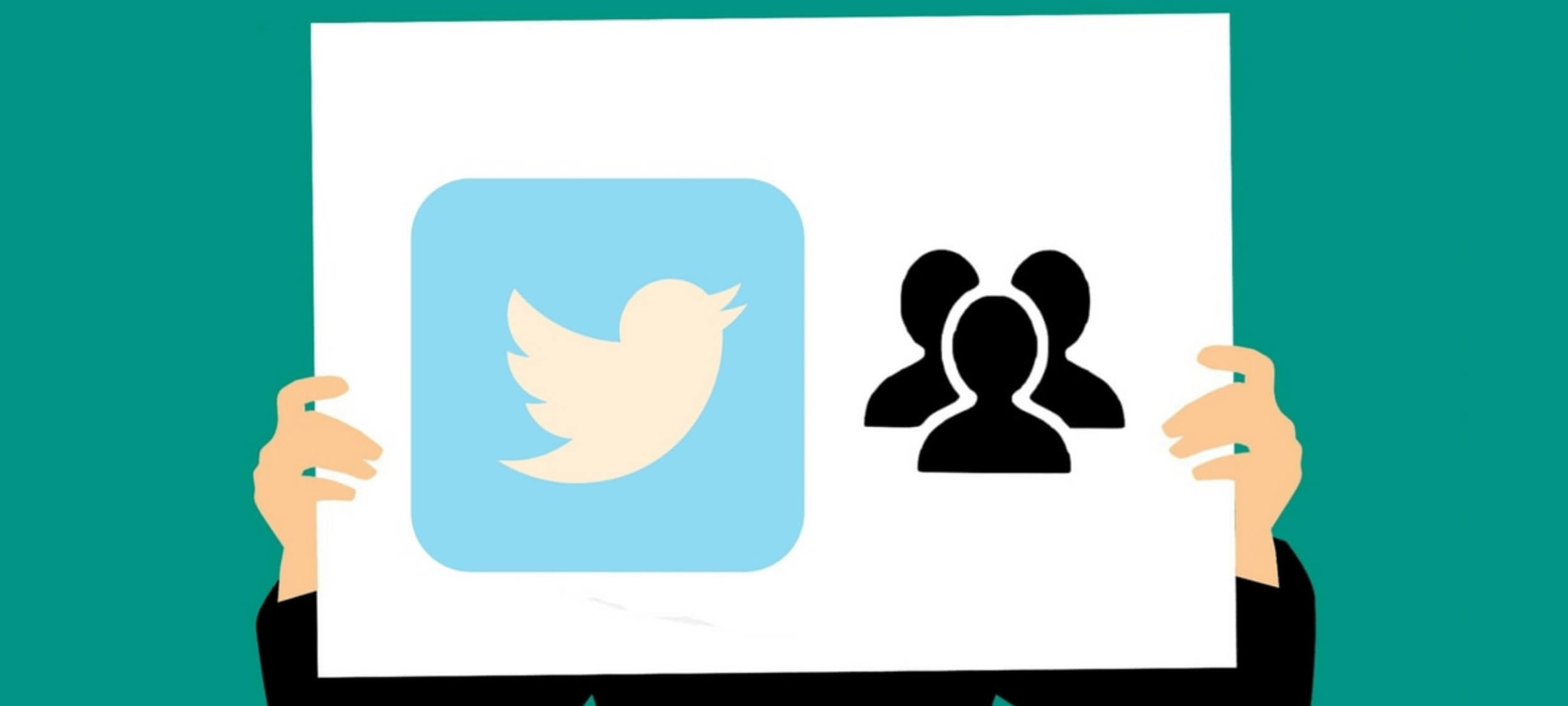
Twitter made me do it!
Opinion + AnalysisHealth + WellbeingScience + Technology
BY Michael Salter The Ethics Centre 5 SEP 2016
In a recent panel discussion, academic and former journalist Emma Jane described what happened when she first included her email address at the end of her newspaper column in the late nineties.
Previously, she’d received ‘hate mail’ in the form of relatively polite and well-written letters but once her email address was public, there was a dramatic escalation in its frequency and severity. Jane coined the term ‘Rapeglish’ to describe the visceral rhetoric of threats, misogyny and sexual violence that characterises much of the online communication directed at women and girls.
Online misogyny and abuse has emerged as a major threat to the free and equal public participation of women in public debate – not just online, but in the media generally. Amanda Collinge, producer of the influential ABC panel show Q&A, revealed earlier this year that high profile women have declined to appear in the program due to “the well-founded fear that the online abuse and harassment they already suffer will increase”.
Twitter’s mechanics mean users have no control over who replies to their tweets and cannot remove abusive or defamatory responses.
Most explanations for online misogyny and prejudice tend to be cultural. We are told that the internet gives expression to or amplifies existing prejudice – showing us the way we always were. But this doesn’t explain why some online platforms have a greater problem with online abuse than others. If the internet were simply a mirror for the woes of society, we could expect to see similar levels of abuse across all online platforms.
The ‘honeypot for assholes’
This isn’t the case. Though it isn’t perfect, Facebook has a relatively low rate of online abuse compared to Twitter, which was recently described as a “honeypot for assholes”. One study found 88 percent of all discriminatory or hateful social media content originates on Twitter.
Twitter’s abuse problem illustrates how culture and technology are inextricably linked. In 2012, Tony Wang, then UK general manager of Twitter, described the organisation as “the free speech wing of the free speech party”. This reflects a libertarian commitment to uncensored information and rampant individualism, which has been a long-standing feature of computing and engineering culture – as revealed in the design and administration of Twitter.
Twitter’s mechanics mean users have no control over who replies to their tweets and cannot remove abusive or defamatory responses, which makes it an inherently combative medium. Users complaining of abuse have found that Twitter’s safety team does not view explicit threats of rape, death or blackmail as a violation of their terms of service.
The naïve notion that Twitter users should battle one another within a ‘marketplace of ideas’ . . . ignores the way sexism, racism and other forms of prejudice force diverse users to withdraw from the public sphere.
Twitter’s design and administration all reinforce the ‘if you can’t take the heat, get out of the kitchen’ machismo of Silicon Valley culture. Social media platforms were designed within a male dominated industry and replicate the assumptions and attitudes typical of men in the industry. Twitter provides users with few options to protect themselves from abuse and there are no effective bystander mechanisms to enable users to protect each other.
Over the years, the now banned Milo Yiannopoulos and now imprisoned ‘revenge porn king’ Hunter Moore have accumulated hundreds of thousands of admiring Twitter followers by orchestrating abuse and hate campaigns. The number of followers, likes and retweets can act like a scoreboard in the ‘game’ of abuse.
Suggesting Twitter should be a land of free speech where users should battle one another within a ‘marketplace of ideas’ might make sense to the white, male, heterosexual tech bro, but it ignores the way sexism, racism and other forms of prejudice force diverse users to withdraw from the public sphere.
Dealing with online abuse
Over the last few years, Twitter has acknowledged its problem with harassment and sought to implement a range of strategies. As Twitter CEO Dick Costolo stated to employees in a leaked internal memo, ‘We suck at dealing with abuse and trolls on the platform and we’ve sucked at it for years’. However, steps have been incremental at best and are yet to make any noticeable difference to users.
How do we challenge the most toxic aspects of internet culture when its norms and values are built into online platforms themselves?
Researchers and academics are calling for the enforcement of existing laws and the enactment of new laws in order to deter online abuse and sanction offenders. ‘Respectful relationships’ education programs are incorporating messages on online abuse in the hope of reducing and preventing it.
These necessary steps to combat sexism, racism and other forms of prejudice in offline society might struggle to reduce online abuse though. The internet is host to specific cultures and sub-cultured in which harassment is normal or even encouraged.
Libertarian machismo was entrenched online by the 1990s when the internet was dominated by young, white, tech-savvy men – some of whom disseminated an often deliberately vulgar and sexist communicative style that discouraged female participation. While social media has bought an influx of women and other users online it has not displaced these older, male-dominated subcultures.
The fact that harassment is so easy on social media is no coincidence. The various dot-com start-ups that produced social media have emerged out of computing cultures that have normalised online abuse for a long time. Indeed, it seems incitements to abuse have been technologically encoded into some platforms.
Designing a more equitable internet
So how do we challenge the most toxic aspects of internet culture when its norms and values are built into online platforms themselves? How can a fairer and more prosocial ethos be built into online infrastructure?
Changing the norms and values common online will require a cultural shift in computing industries and companies.
Earlier this year, software developer and commentator Randi Lee Harper drew up an influential list of design suggestions to ‘put out the Twitter trashfire’ and reduce the prevalence of abuse on the platform. Her list emphasises the need to give users greater control over their content and Twitter experience.
One solution might appear in the form of social media app Yik Yak – basically a local, anonymous version of Twitter but with a number of important built-in safety features. When users post content to Yik Yak, other users can ‘upvote’ or ‘downvote’ the content depending on how they feel about it. Comments that receive more than five ‘down’ votes are automatically deleted, enabling a swift bystander response to abusive content. Yik Yak also employs automatic filters and algorithms as a barrier against the posting of full names and other potentially inappropriate content.
Yik Yak’s platform design is underpinned by a social understanding of online communication. It recognises the potential for harm and attempts to foster healthy bystander practices and cultures. This is a far cry from the unfettered pursuit of individual free speech at all costs, which has allowed abuse and harassment to go unaddressed in the past.
It seems like it will require more than a behavioural shift from users. Changing the norms and values common online will require a cultural shift in computing industries and companies so the development of technology is underpinned by a more diverse and inclusive understanding of communication and users.
Ethics in your inbox.
Get the latest inspiration, intelligence, events & more.
By signing up you agree to our privacy policy
You might be interested in…
Opinion + Analysis
Health + Wellbeing, Relationships
The etiquette of gift giving
Opinion + Analysis
Business + Leadership, Relationships, Science + Technology
Are we ready for the world to come?
Opinion + Analysis
Health + Wellbeing
Tough love makes welfare and drug dependency worse
Opinion + Analysis
Politics + Human Rights, Health + Wellbeing, Society + Culture
I changed my mind about prisons
BY Michael Salter
Scientia Fellow and Associate Professor of Criminology UNSW. Board of Directors ISSTD. Specialises in complex trauma & organisedabuse.com
BY The Ethics Centre
The Ethics Centre is a not-for-profit organisation developing innovative programs, services and experiences, designed to bring ethics to the centre of professional and personal life.
LGBT...Z? The limits of ‘inclusiveness’ in the alphabet rainbow

LGBT…Z? The limits of ‘inclusiveness’ in the alphabet rainbow
Opinion + AnalysisHealth + WellbeingRelationships
BY Jesse Bering The Ethics Centre 5 SEP 2016
A few years ago on Twitter, I found myself mindlessly clicking on a breadcrumb trail of ‘likes’ linked to a random post. It was under these banal circumstances that I came across a user profile with a brief but purposeful bio, one featuring the mysterious acronym ‘LGBTZ’.
The first four letters were obvious enough to me. LGBT, that bite-sized abbreviation for Lesbian, Gay, Bisexual, Transgender, has become a nearly ubiquitous rallying call for members of these historically marginalised groups and their allies. Even Donald Trump spoke this family friendly shorthand in his convention speech (although his oddly staggered enunciation sounded like he was a nervous pre-schooler tip-toeing through an especially tricky part of the alphabet). Trump also tacked on a “Q” for all those ill-defined “Queers” in the Republican audience. (A far less common iteration of this initialism includes an “I” for “Intersex” and an “A” for “Asexual.”)
But Z? The Twitter user’s profile image was a horse, and other language alluding to the fact he (or she) was an animal lover – and not of the platonic kind – brought that curious Z into sharp, squirm-worthy focus: “Zoophile”.
Perhaps we should take a hard look in the mirror and ask whether excluding Zs and Ps and others from the current tolerance roster isn’t doing to them precisely what was once done to us.
If you’re not familiar with the term, a zoophile is a person who is primarily sexually attracted to animals. The primarily part of that sentence is key. These aren’t just lascivious farmhands shagging goats because they can’t find willing human partners. That’s just plain bestiality.
Rather, these are people who genuinely prefer animals over members of their own species. If you hook a male zoophile’s genitals up to a plethysmograph (an extremely sensitive measure of sexual arousal), these men display stronger erectile responses to, say, images of stallions or Golden Retrievers than they do to naked human models.
I’d written about scientific research into zoophilia, along with other unusual sexualities, in my book Perv, so it wasn’t shocking to learn zoophiles have a social media presence. What’s surprising is this maligned demographic is apparently becoming emboldened enough to pull its Z up to the acronym table.
Paedophiles have started inching their much-loathed “P” in this direction as well, albeit in veiled form with the contemporary label “MAP” (“Minor-Attracted Person”). This is especially true for the so-called virtuous paedophiles, who are seriously committed to refraining from acting on their sexual desires because they realise the harm they’d cause to children. Similarly, many zoophiles consider themselves gentle animal welfare advocates, denouncing “zoosadists” who sexually abuse animals.
In any event, it’s easy to shun the Zs and Ps and all the other unwanted sexual minorities clawing their way up the acceptance ladder, refusing them entry into our embattled LGBT territory, because we don’t want to be associated with “perverts”. We’ve overcome tremendous obstacles to be where we are today. As an American growing up during the homophobic Reagan era, never in a million years did I imagine I’d legally marry another man one day. Yet I did. At this stage, perhaps we should take a hard look in the mirror and ask whether excluding Zs and Ps and others from the current tolerance roster isn’t doing to them precisely what was once done to us.
I know what you’re thinking. There’s a huge difference, since in these sad cases we’re dealing with the most innocent, most vulnerable members of society, who also can’t give their consent. That’s very much true.
When you actually try to justify our elbowing the Zs and Ps and others of their ilk out from under the rainbow umbrella though, it’s not so straightforward. Any seemingly ironclad rationale for their exclusion is stuffed more with blind emotion than clear-sighted reason.
To begin with, one doesn’t have to be sexually active to be a member of a sexual community. After all, I identified as gay before I had gay sex, just as I imagine most heterosexual people identify as straight before losing their virginity. In principle, at least, the same would apply to morally celibate zoophiles and paedophiles, neither of which are criminals and child molesters. Desires and behaviours are two different things.
Secondly, there’s now strong evidence paraphilias (lust outside of the norm) emerge in early childhood or, in the case of paedophilia, may even be innate. One zoophile, a successful attorney, told researchers that while his friends in middle school were all trying to get their hands on their fathers’ Playboys, he was secretly coveting the latest issue of Equus magazine.
Whether Zs or Ps are “born that way” or become that way early in life, it’s certainly not a choice they’ve made. This isn’t difficult to grasp but it tends to elude popular wisdom. I don’t know about you but I couldn’t become aroused by a Clydesdale or a prepubescent child if my life depended on it. That doesn’t make me morally superior to those unlucky enough to have brains that through no fault of their own respond this way to animals and children.
It’s an uncomfortable conversation to have, but there’s no science or logic to why “LGBT” contains the particular letters it does.
Not so long ago, remember, the majority of society saw gay men like me as immoral – even evil. Not for anything they’d done but for the simple fact that, neurologically, they fancied other men rather than women. The courts would have declared me mentally ill, not happily married. Just like conversion therapy has failed miserably to turn gay people straight, paraphilias are also immutable. Every clinical attempt to turn paedophiles into “teleiophiles” (attracted to reproductive-aged adults) has been a major flop.
Who knows what tortuous inner lives all those closeted Zs and Ps – and other unmentionables bearing today’s cross of scorn – experience, despite being celibate. Clinical psychologists report many of their clients are suicidal because of unwanted sexual desires – and this includes teenagers with a dawning awareness they are attracted to younger people.
I think it’s patently hypocritical for the LGBT community – which has worked so hard to overcome negative stereotypes, ostracism, and unjust laws – to shut out these people, fearing they would tarnish us more acceptable deviants. We’re only paying lip service to the concept of inclusiveness when we so publicly distance ourselves from those who need this communal protection the most.
In fact, LGB people arguably share more in common with the Zs and Ps than they do the Ts, since being transgender isn’t about who (or what) you’re sexually attracted to, but the gender you identify with. Unlike those representing the other letters in this character soup, trans people say their sexuality plays no role at all. Why then are Ts included while other, more unspeakable, sexual minorities aren’t?
Here’s my point then. It’s an uncomfortable conversation to have but there’s no science or logic to why “LGBT” contains the particular letters it does. Instead, it’s an evolving social code. So, is the filter that shapes this code just another moralistic lens that casts some human beings as inherently inferior and worthier of shame than others? And if this is so, who gets to control this filter and why?
Ethics in your inbox.
Get the latest inspiration, intelligence, events & more.
By signing up you agree to our privacy policy
You might be interested in…
Opinion + Analysis
Business + Leadership, Health + Wellbeing, Relationships
Office flings and firings
Explainer
Relationships
Ethics Explainer: Double-Effect Theory
Explainer
Relationships
Ethics explainer: Normativity
Opinion + Analysis
Relationships, Society + Culture













